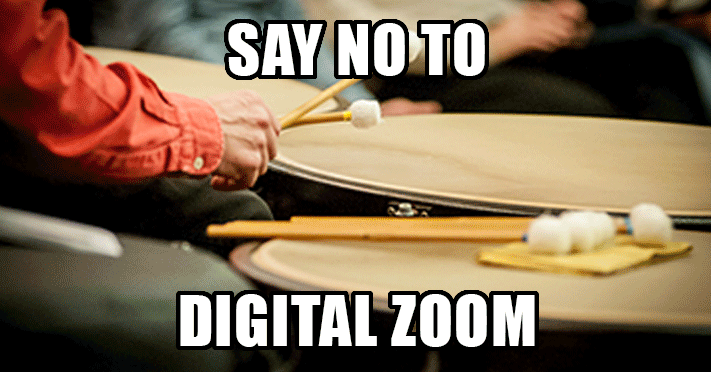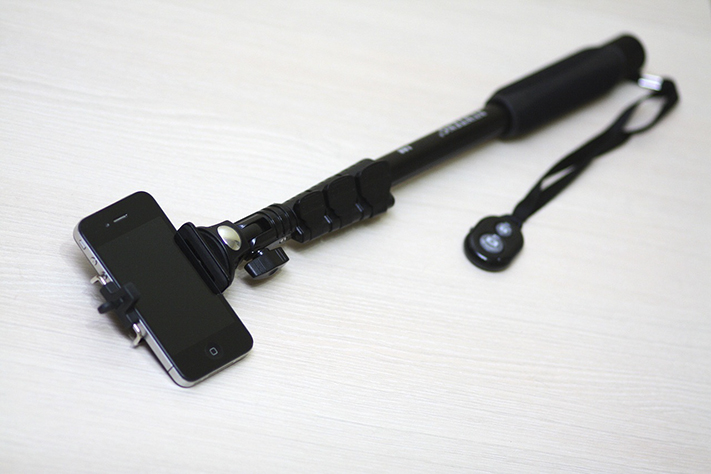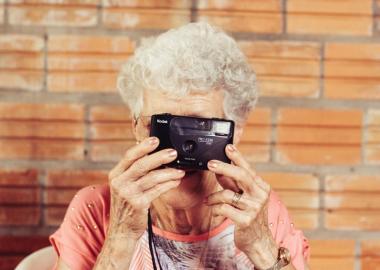Your group may not have the budget to hire a professional crew to film your next performance, but that doesn't mean that you can't produce attractive and engaging video with the most basic tools.
You will find very good lenses and sensors in many smartphones or inexpensive cameras, and you can also access free editing software on the computer or mobile device of your choice. But you also need some notions of videography, a good eye for detail and a decent amount of creativity! Here are some ideas to keep in mind:
- Why are you filming?
Have a very clear idea of what you want to film and what you will use the footage for. Is it just raw video to show to your performers so they can improve their playing and body language? Is it a short (20-30 second) clip to share on social media? Do you want to post a full concert on your website? All these options should be approached differently.
- What will the final video look like?
You need to know this before you start to film. Is it just the view of one camera from a static position? Will you be moving around or amongst the players - a tricky thing to do, even for professional videographers? Will you ask other people to film and then mash up their footage? A good example of this is the video that the ABRSM did for Make Music Day 2017.
- A smartphone might do.
If you have access to a top-of-the-line mobile phone, it might have a surprisingly powerful video camera. Use the back camera, not the front one, as the latter is usually lower quality. If you will be uploading your video to YouTube or you hope to display it on a wide screen, remember to hold you phone horizontally. Nobody wants to watch a vertical stripe of video on a horizontal screen!
- Avoid interruptions.
Remember to switch your phone to 'airplane' mode so you are not interrupted by calls, messages or other notifications. And make sure you have enough battery for the recording. If your phone or camera runs out of battery mid-recording, you might lose everything you've filmed!
- Do you have enough memory?
If you are using a phone, consider backing it up and temporarily deleting the most bulky apps and other videos/photos you have on memory. Depending on the phone you use, a ten minute video could be 1.5 GB in size. If you are using a proper camcorder or DSLR camera, make sure you have a memory card with enough space.
- Stick to short clips.
Digital recording is not perfect. It's basically a computer writing onto a memory drive in real time. This means that there can be both hardware and software errors. So never just leave a smartphone or camera recording a full concert, as if there is a problem with the writing, you might lose everything you filmed. Instead, try to capture each piece separately.
- Careful with DSLRs!
If you are filming with a DSLR camera, find out how many minutes of video it can record. Most of these cameras – designed mainly for photography – can only handle an limited amount of filiming before their processors overheat and shut down automatically.
- Avoid digital zoom like the plague.
Digital zoom almost always results in very low quality video. If your camera does not have a zoom lens, either get closer or just get the best possible wide shot.

- Consider using a tripod or a monopod.
You can use a clamp or adapter to attach a smartphone. There are some very good inexpensive options out there, and they will be worth it when your arms get tired and start to shake after filming for several minutes.

- Keep your image attractive.
Have a look at the advice on lighting and composition in our resource about photography, as most of this applies equally to video.
- Mind your focus and exposure.
With most smartphones, touching a point on the screen will tell the phone where the camera lens should focus and how much to expose the image. Most camcorders and DLSRs will either do this for you automatically or give you the option of manual control.
- Record your audio separately.
Smartphones can be good for video, but if you're looking for high sound quality, ideally you want to capture your audio in some other device. The phone or the camera, in your hands, will record the noise from your movements and the sound from the audience. Consider getting a portable recorder - the ones between £70 and £90 are surpisingly good - and place it on a safe and solid location that will let you capture the best sound. Want even better audio? Consider using a couple of additional recorders and then mixing the audio on a computer.
- Know the music you are filming.
If you are using more than one camera, you might want to focus on some key moments in the music (a solo, a counterpoint between two musicians). It helps if the videographers know what to look out for.
- What if you only have one camera?
You will have to choose between leaving a wide static shot or, if your camcorder or DSLR has a zoom lens, zooming to follow the action. If you do the latter, make sure to zoom in to capture the best bits and gently zoom back out so you are ready to zoom in again elsewhere. If you are using a smartphone, you can either choose a great spot and stay there, or carefully move around a bit. If you need inspiration for what can be done with just one video camera during a live music performance, have a look at this video from British band Metronomy.
- Backup and upload asap.
Smartphones and camera memory cards are not built as long-term storage devices. One unexpected bump and the footage can be damaged. So make sure to copy your footage to either a computer or external drive as soon as possible, or share it online.
- Remember to crop.
If you are uploading a short video for social media, don't forget that you can probably crop it (cut out any irrelevant bits at the beginning and end) directly on your phone before upload. This way you can focus on the most important bits and produce a more engaging clip.
- The best software to edit your video?
There are many free or inexpensive options for video editing software that you can use on your phone, tablet or computer. They will allow you to mix several clips, make attractive transitions and add titles. It's up to you how far you want to go with this. But the truth is that, if you've followed the tips above to get the best raw footage, you might find no need to do any additional editing on your video. Have a look at the tutorial below.
- Uploading your video.
If you are posting to Facebook or YouTube from your smartphone or tablet, you can just use the default tools for these websites. If you are exporting the video from your computer, keep in mind these recommended upload encoding settings, but the truth is that YouTube and Facebook will accept almost any video format and will optimise it for you.
- Sharing on social media.
Your followers probably have dozens if not hundreds of videos to choose from in their social media feeds every day. Make sure to give your video an appealing title to stand out from the crowd and try to keep the video short and engaging to encourage social sharing.
- Sharing on your website.
In the 90's and early 2000's it was common for people to upload a video to their website and share it from there. These days, most people simply upload the video to YouTube, Vimeo or some other video sharing service, and then grab the embed code and post that on their website. Learn how to do that here.
- What about the law?
Make sure you are not breaking any laws or exposing yourself to legal action. Find out when you need film permits or model releases, insurance and even child performance licences. Film London and the British Film Commission are good sources of information, but keep in mind that many regulations in the UK are local, so you might have to contact your Council. Also, ensure you have an understanding of copyright issues.
We hope you find this Making Music resource useful. If you have any comments or suggestions about the guidance please contact us. Whilst every effort is made to ensure that the content of this guidance is accurate and up to date, Making Music do not warrant, nor accept any liability or responsibility for the completeness or accuracy of the content, or for any loss which may arise from reliance on the information contained in it.








